There are many rotary systems on the dental market at present. All of these systems are relatively similar, except for one. This system is called Twisted Files (TF) and it was introduced to the dental market in 2008. How does this system differ from other rotary systems?
Introduction
I am glad to have been among the first users of this system, which has changed the endodontic world. How does this system differ from other rotary systems? Firstly, by its unique machining—which is a SybronEndo patent.
The NiTi wire is brought into a special state (called R-Phase) that allows the twisting of the file. This makes TF distinct from all the other systems, for which the shape of the file is machined by milling, a mechanical process. This unique procedure lends particular resistance to TF, as well as an extraordinary flexibility. Owing to this manufacturing technique, a TF untwists before breaking, warning the dentist in this way. In addition, being made by twisting and not by polishing/milling, all the microcracks are eliminated, resulting in a more resistant, more robust file. The manufacturing process is completed by applying an advanced surface conditioning treatment that makes the edges active (cutting).
The tip of a TF is inactive, which allows it to follow the route of the canal easily and to minimise canal transportation. The working sequence with this system is terribly easy and consequently working time is reduced.
The files may be recognised and differentiated by the help of the practical system of codification. There are two coloured rings: the lower one (closer to the active part) shows the apical diameter (ISO standard; for example: red = 25) and the upper one shows the taper size (Fig. 1). Two working lengths are available: 23 and 27 mm.
embedImagecenter("Imagecenter_1_744",744, "large");
The clinical procedure
In this part, I will describe the TF technique. Treatment with TF always begins by creating a glide path in the canals with #6 to 20 K-files. After opening and access, treatment inside the canal begins. In the absence of adequate access into the canal, there is the risk of overworking the file and its subsequent fracture. By opening the canals with K-files, important information about the anatomy of the root canal is obtained, such as the existence of curves and the diameter of the root canal.
Generally, the first TF that is introduced into the canal is TF 25.08 (the apical diameter is 25 mm and it has a taper of 8%), which in most cases will reach the working length previously detected by means of an apex locator. The endodontic engine must be set at 500 rpm and the torque at 2 N cm. The file is introduced into the canal in rotation and without pressure applied. It is sufficient to advance 2 to 4 mm when introducing the file into the canal. If the file does not advance, then a file with a smaller taper (TF 25.06) must be used instead to achieve working length.
During preparation, there must be sodium hypochlorite in the root canal at all times. The file is cleaned and examined to detect possible distortion before introduction to the canal and upon withdrawal. If the file exhibits some distortion, it must be replaced (Fig. 2). If TF 25.08 reaches working length easily, then a file with a greater taper can be used (TF 25.10 or 25.12).
After reaching the desired taper, the final apical diameter is prepared. There are many studies in the endodontic literature that have found that apical preparation up to a #25 K-file is insufficient. For this reason, after reaching the taper the TF 30.06 or 35.06 or both are used. If greater apical diameters are desired, TF 40.04 or 50.04 can be used.
The greater the apical diameter is, the greater the quantities of irrigation that reach the apex will be and the cleaner the apex will be. It is generally known that apical preparation by means of rotary files with large diameters can create many problems because of the stiffness of the rotary files, such as transportation of the apex and changes to the root-canal anatomy. With TF, however, this does not occur, owing to the unique machining process, which ensures that the files are flexible, even those with large apical diameters.
Case 1
The patient came to our clinic with acute apical periodontitis around tooth 26. When examined clinically and radiographically, the tooth showed a large composite filling next to the distal pulp horn (Figs. 3 & 4). The periodontal examination did not find any irregularities; however, the tooth was extremely painful in vitality tests. Initially, I intended to replace the composite filling. After removing the old composite filling, I noticed secondary decay that reached up to the pulp chamber (Fig. 5) and I subsequently decided to pursue endodontic treatment. The treatment was performed in one session. Four canals were identified (MB, MB2, DB and P; Fig. 6). The main problem was in the MB2 canal, which had a 90-degree curvature. The treatment was performed with TF 25.06 in the MB2 canal and with TF 25.08 in the other canals (Fig. 7). As a final irrigant, I used SmearClear (SybronEndo). After obturating the canals with warm vertical condensation using the Elements Obturation Unit (SybronEndo; Fig. 8), the canals were sealed with a coloured composite (RxFlow, Dental Life Sciences; Fig. 9). Finally, the tooth was restored with a composite filling (Fig. 10) and the control X-ray was taken (Fig. 11).
Case 2
The patient was referred to our clinic by another doctor who had come across difficulties when identifying and working in the canals of tooth 37. The presence of a temporary filling done during previous treatment was observed during the clinical examination (Fig. 12). An initial X-ray was taken to identify any possible associated pathology, the presence of canals, etc. (Fig. 13). After removing the temporary filling, three root canals were identified, shaped and cleaned (Fig. 14). The treatment was performed with TF 25.10 up to 40.04. The MB and ML canals merged, as shown by the file impression from the MB canal on the gutta-percha cone (Fig. 15). The final irrigation was done with SmearClear. The tooth was obturated with warm vertical condensation using the Elements Obturation Unit (Fig. 16), and finally restored with composite material and a fibreglass post (Fig. 17).
The control X-ray showed that the root canal and numerous accessory canals (Fig. 18) had been properly cleaned and obturated due to working with TF rotary files and negative irrigation with EndoVac (SybronEndo).
Conclusion
TF permits treatment even in the most difficult clinical situations and is essential to the dentist. Using TF, it is possible to widen the apex up to a #50 K-file without the risk of transporting the apex. In addition, owing to its unique machining, TF untwists before separating in the canal, thereby giving the dentist timely warning to replace the file and significantly decreasing the risk of accidents while working with the rotary files. Another major advantage is that this system aids the maintenance of the root-canal anatomy owing to the remarkable flexibility of the files.
Definitive competent management of apical third anatomy, especially severe curvature, is the net result of performing all the previous steps (beginning with...
Over the last two decades, extensive research has been carried out to alleviate the two major shortcomings of orthodontic treatment: visibility and ...
The patient reported on in this article is a student in dentistry and his parents are both dentists. They referred their son to a good endodontist, who then...
The patient reported on in this article is a student in dentistry and his parents are both dentists. They referred their son to a good endodontist, who then...
A 72-year-old patient presented to our clinic for whom crown treatment of tooth #37 was planned owing to the patient complaining of recent pain on biting ...
SYDNEY, Australia: The state of Australians’ oral health has been covered extensively down under for many years. As reported by Dental Tribune early in ...
There are enormous differences in opinion regarding the best methods for shaping root canals. A review of the literature reveals virtually no agreement on a...
FKG Dentaire is considered a leader in innovation, cultivating a company culture defined by creativity and ingenuity. Situated in the heart of the Swiss ...
Endodontic treatment can attain success rates of between 85 and 97%.1 Adequate treatment protocols, knowledge and infection control are essential to ...
BERLIN, Germany: At the third global demonstration against climate change, held at the end of September, the World Health Summit participated in a campaign ...
Live webinar
Tue. 2 December 2025
12:00 pm EST (New York)
Dr. Petros Yuvanoglu D.M.D., Prosthodontist, Boston University / Tufts University, Dr. Robert Gottlander DDS
Live webinar
Tue. 2 December 2025
1:00 pm EST (New York)
Live webinar
Tue. 2 December 2025
8:00 pm EST (New York)
Dr. Magda Feres DDS, MSc, DMSc, Dr. Ira Lamster DDS, MMSc, Editor-in-Chief
Live webinar
Wed. 3 December 2025
6:00 am EST (New York)
Luís Lourenço, Dr. Nokukhanya Makwakwa
Live webinar
Wed. 3 December 2025
9:00 am EST (New York)
Live webinar
Wed. 3 December 2025
12:00 pm EST (New York)
Live webinar
Thu. 4 December 2025
6:00 am EST (New York)



 Austria / Österreich
Austria / Österreich
 Bosnia and Herzegovina / Босна и Херцеговина
Bosnia and Herzegovina / Босна и Херцеговина
 Bulgaria / България
Bulgaria / България
 Croatia / Hrvatska
Croatia / Hrvatska
 Czech Republic & Slovakia / Česká republika & Slovensko
Czech Republic & Slovakia / Česká republika & Slovensko
 France / France
France / France
 Germany / Deutschland
Germany / Deutschland
 Greece / ΕΛΛΑΔΑ
Greece / ΕΛΛΑΔΑ
 Hungary / Hungary
Hungary / Hungary
 Italy / Italia
Italy / Italia
 Netherlands / Nederland
Netherlands / Nederland
 Nordic / Nordic
Nordic / Nordic
 Poland / Polska
Poland / Polska
 Portugal / Portugal
Portugal / Portugal
 Romania & Moldova / România & Moldova
Romania & Moldova / România & Moldova
 Slovenia / Slovenija
Slovenia / Slovenija
 Serbia & Montenegro / Србија и Црна Гора
Serbia & Montenegro / Србија и Црна Гора
 Spain / España
Spain / España
 Switzerland / Schweiz
Switzerland / Schweiz
 Turkey / Türkiye
Turkey / Türkiye
 UK & Ireland / UK & Ireland
UK & Ireland / UK & Ireland
 Brazil / Brasil
Brazil / Brasil
 Canada / Canada
Canada / Canada
 Latin America / Latinoamérica
Latin America / Latinoamérica
 USA / USA
USA / USA
 China / 中国
China / 中国
 India / भारत गणराज्य
India / भारत गणराज्य
 Pakistan / Pākistān
Pakistan / Pākistān
 Vietnam / Việt Nam
Vietnam / Việt Nam
 ASEAN / ASEAN
ASEAN / ASEAN
 Israel / מְדִינַת יִשְׂרָאֵל
Israel / מְדִינַת יִשְׂרָאֵל
 Algeria, Morocco & Tunisia / الجزائر والمغرب وتونس
Algeria, Morocco & Tunisia / الجزائر والمغرب وتونس
 Middle East / Middle East
Middle East / Middle East
























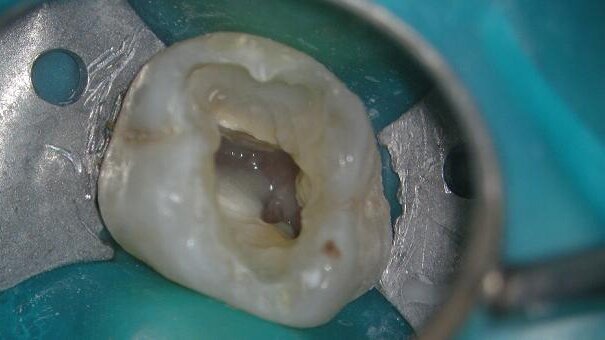




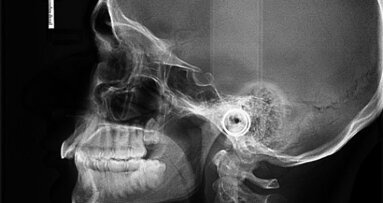
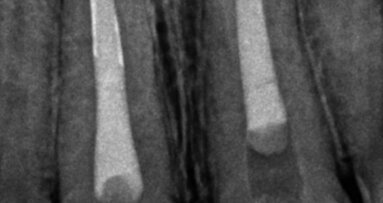
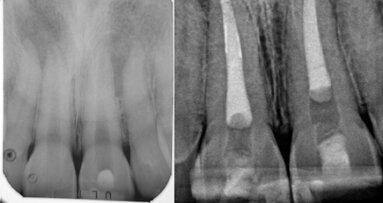


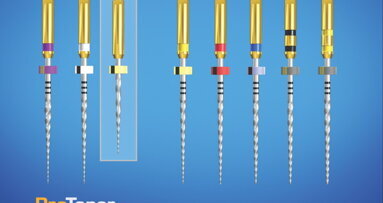












To post a reply please login or register